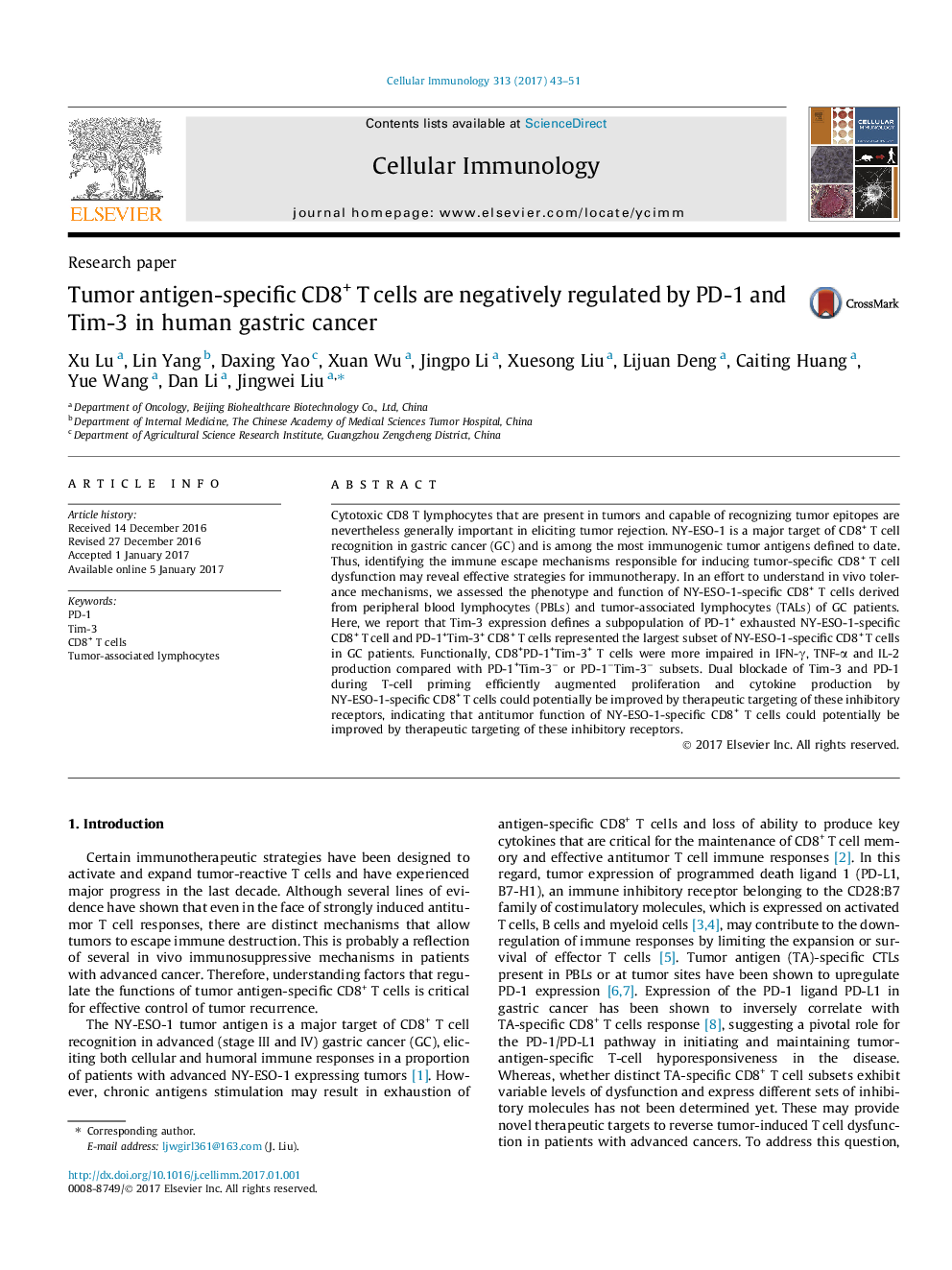| Article ID | Journal | Published Year | Pages | File Type |
|---|---|---|---|---|
| 5530763 | Cellular Immunology | 2017 | 9 Pages |
â¢Tim-3 expression defines a subpopulation of PD-1+ exhausted NY-ESO-1-specific CD8+ T cell and PD-1+Tim-3+ CD8+ T cells represented the largest subset of NY-ESO-1-specific CD8+ T cells in GC patients.â¢Tumor-derived NY-ESO-1-specific CD8+ T cells enriched coexpression of PD-1 and Tim-3 demonstrated impaired effector function.â¢Dual blockade of PD-1 and Tim-3 pathways may allow for a more comprehensive reversal of tumor-induced T cell exhaustion, potentially leading to potent combination therapies.â¢Antitumor T-cell function could potentially be improved by therapeutic targeting of these inhibitory receptors in human gastric cancer.
Cytotoxic CD8 T lymphocytes that are present in tumors and capable of recognizing tumor epitopes are nevertheless generally important in eliciting tumor rejection. NY-ESO-1 is a major target of CD8+ T cell recognition in gastric cancer (GC) and is among the most immunogenic tumor antigens defined to date. Thus, identifying the immune escape mechanisms responsible for inducing tumor-specific CD8+ T cell dysfunction may reveal effective strategies for immunotherapy. In an effort to understand in vivo tolerance mechanisms, we assessed the phenotype and function of NY-ESO-1-specific CD8+ T cells derived from peripheral blood lymphocytes (PBLs) and tumor-associated lymphocytes (TALs) of GC patients. Here, we report that Tim-3 expression defines a subpopulation of PD-1+ exhausted NY-ESO-1-specific CD8+ T cell and PD-1+Tim-3+ CD8+ T cells represented the largest subset of NY-ESO-1-specific CD8+ T cells in GC patients. Functionally, CD8+PD-1+Tim-3+ T cells were more impaired in IFN-γ, TNF-α and IL-2 production compared with PD-1+Tim-3â or PD-1âTim-3â subsets. Dual blockade of Tim-3 and PD-1 during T-cell priming efficiently augmented proliferation and cytokine production by NY-ESO-1-specific CD8+ T cells could potentially be improved by therapeutic targeting of these inhibitory receptors, indicating that antitumor function of NY-ESO-1-specific CD8+ T cells could potentially be improved by therapeutic targeting of these inhibitory receptors.
